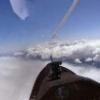Mooney down in CT - N53CP
-
Members Online
- Ragsf15e
- mariosmt
- PeteMc
- Florian Guthardt
- Planegary
- Texas Mooney
- rahill
- Shadrach
- exM20K
- RescueMunchkin
- KB4
- Missile 300
- tankles
- Stubby
- Aviationist
- FlyingDude
- BennyandtheJet
- CCAS
- jlunseth
- MatthiasArnold
- denbmd
- dzeleski
- tim417
- TigerFan
- TCC
- atpdave
- Jack Burson
- wombat
- carusoam
- flyfast
- joepilotmooney
- jsclafani
- Andy95W
- haymak3r
- EricJ
- Skates97
- TheAv8r
- cbogie
- RoundTwo
- dc0115
- kaba
- daytonabch04
- BenP
- JayMatt
- eman1200
- Ron McBride


Recommended Posts
Join the conversation
You can post now and register later. If you have an account, sign in now to post with your account.